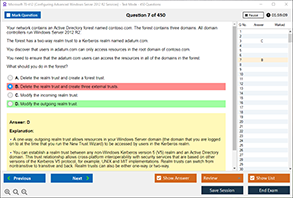Introduction
The evolution of Internet Protocol (IP) addressing has been driven by the need for scalability, efficiency, and enhanced security. IPv6 (Internet Protocol version 6) was introduced to address the limitations of IPv4, particularly the exhaustion of available addresses. One of the fundamental aspects of IPv6 is its address structure, which differs significantly from IPv4. This article explores how many binary bits exist within an IPv6 address, why such a large address space is necessary, and how it benefits networking environments.
Understanding IPv6 Addressing
An IPv6 address is 128 bits long. This is a significant increase compared to the 32-bit structure of IPv4. The expanded bit length allows for a nearly limitless number of unique IP addresses, making IPv6 a viable long-term solution for the growing demand for internet connectivity.
Each IPv6 address consists of 128 binary bits, typically written in hexadecimal format to enhance readability. These addresses are divided into eight 16-bit segments, separated by colons (:). This format is known as colon-hexadecimal notation.
Representation of an IPv6 Address
A typical IPv6 address looks like this:
2001:0db8:85a3:0000:0000:8a2e:0370:7334Each section represents 16 bits in hexadecimal form. For example, 2001 is equivalent to 0010000000000001 in binary, demonstrating the structured and extensive nature of IPv6.
Why Does IPv6 Use 128 Bits?
IPv4, with its 32-bit addressing scheme, can support around 4.3 billion unique addresses. With the rapid expansion of internet-connected devices, this address space has become insufficient. IPv6, on the other hand, supports 2^128 (approximately 340 undecillion) unique addresses, ensuring enough address space for the foreseeable future.
The use of 128-bit addressing provides several advantages:
-
Scalability: IPv6 accommodates the growing number of IoT (Internet of Things) devices.
-
Enhanced Security: Built-in features such as IPsec (Internet Protocol Security) improve data integrity and confidentiality.
-
Simplified Network Configuration: Features like stateless address autoconfiguration (SLAAC) reduce the need for manual IP management.
Structure of an IPv6 Address
1. Unicast Addresses
These represent a single device in a network and include subtypes such as Global Unicast, Link-Local, and Unique Local Addresses.
2. Multicast Addresses
These addresses are used for one-to-many communication, enabling efficient data distribution.
3. Anycast Addresses
Anycast addressing allows multiple devices to share an address, with routing directing packets to the nearest device in terms of network topology.
IPv6 Address Allocation and Subnetting
IPv6 uses a structured hierarchical allocation to simplify routing and network management. The first 64 bits of an IPv6 address typically represent the network portion, while the last 64 bits are used for the interface identifier.
Subnetting in IPv6 is often performed at the /64 boundary, meaning networks typically receive 64-bit prefixes, leaving the remaining 64 bits for host identification.
Example of IPv6 Subnetting:
-
2001:0db8:abcd:0012::/64 (Network prefix)
-
2001:0db8:abcd:0012:0000:0000:0000:0001 (Host address)
This format enables efficiency in routing while maintaining a large address pool.
Advantages of IPv6 Over IPv4
1. Greater Address Space
IPv6 offers exponentially more addresses compared to IPv4, solving address exhaustion.
2. Improved Security
Built-in IPsec encryption enhances security at the network layer.
3. Better Performance
IPv6 simplifies packet processing, improving efficiency and reducing latency.
4. No Need for NAT (Network Address Translation)
IPv6 eliminates the reliance on NAT, enabling end-to-end connectivity for devices.
5. Efficient Routing
IPv6 enables hierarchical address allocation, leading to optimized routing tables and reduced overhead.
Transitioning from IPv4 to IPv6
Although IPv6 adoption has been gradual, it is steadily increasing. Some key mechanisms used to facilitate this transition include:
-
Dual Stack Implementation: Running both IPv4 and IPv6 simultaneously on devices.
-
Tunneling: Encapsulating IPv6 packets within IPv4 packets for compatibility.
-
Translation (NAT64/DNS64): Allowing IPv6-enabled devices to communicate with IPv4-only networks.
These strategies enable organizations to migrate to IPv6 without disrupting existing services.
Conclusion
IPv6 is the future of internet communication, offering an extensive address space of 128 bits, significantly surpassing the limitations of IPv4. The structured approach of IPv6 improves scalability, security, and network efficiency, making it the ideal protocol for modern networking environments. Understanding the binary structure of IPv6 is essential for network engineers, administrators, and IT professionals as they transition toward a fully IPv6-enabled internet.
Free Sample Questions
1. How many binary bits exist within an IPv6 address?
A) 32 bits
B) 64 bits
C) 128 bits
D) 256 bits
Answer: C) 128 bits
2. What is the primary reason for the adoption of IPv6?
A) To reduce internet speeds
B) To replace TCP with UDP
C) Address space exhaustion in IPv4
D) To eliminate MAC addresses
Answer: C) Address space exhaustion in IPv4
3. Which of the following is a correct IPv6 address notation?
A) 192.168.1.1
B) 2001:0db8:85a3:0000:0000:8a2e:0370:7334
C) FF:EE:DD:CC:BB:AA
D) 256.256.256.256
Answer: B) 2001:0db8:85a3:0000:0000:8a2e:0370:7334



